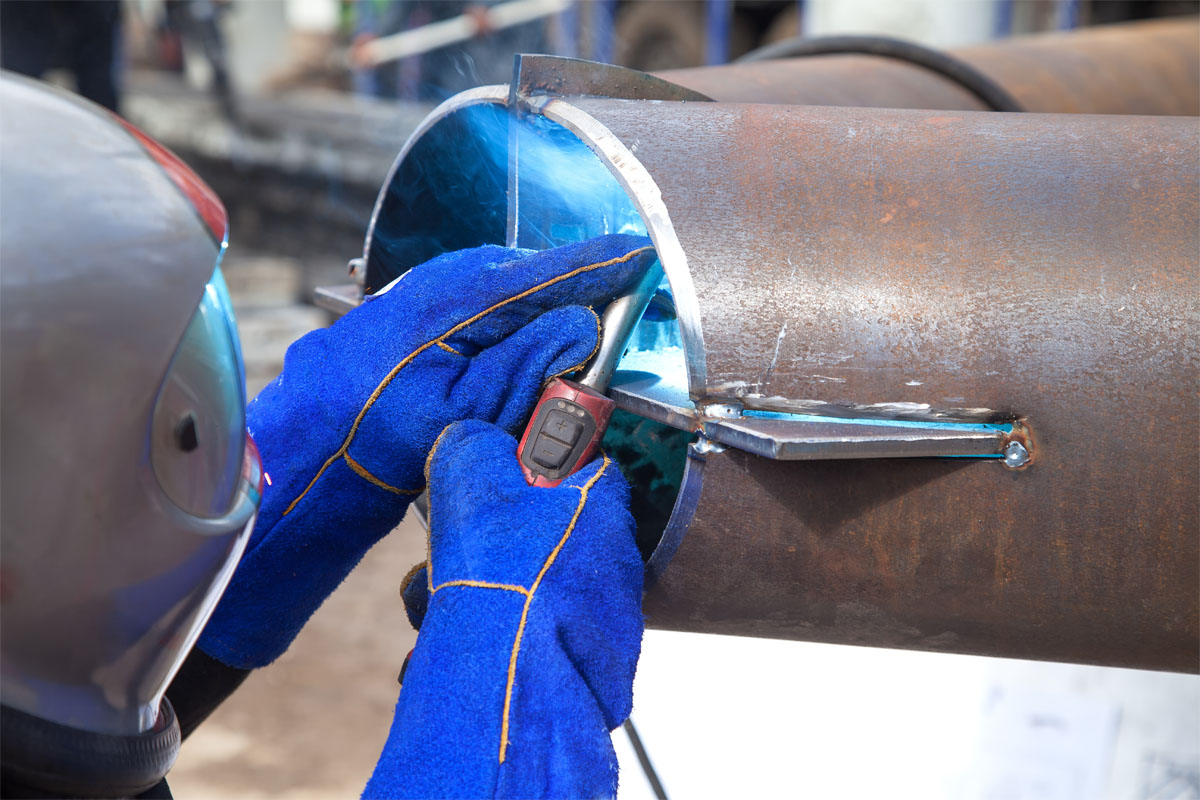Tack welds are minute and temporary welds that hold pieces together prepared for final welding. Utilizing tack welds means pieces may not be required to hold them to each other to produce a finished weld. Tack welds retain the desired gap and alignment between the pieces of metal getting joined.
How Does Tack Welding Work?
Tack welds are miniscule welds that are spread out along the work piece(s). They are usually made from small beads of the same material that is going to be utilized for the final weld. The amount of tack welds required depends on the size of the materials you are welding together.
Even though being minute and temporary in make-up, producing tack welds is still deemed a kind of welding.
What is the Objective of Tack Welds?
Tack welds are utilized to keep 2 metal pieces together prepared for final welding, equally as a tailor might use sewing pins to keep 2 pieces of material together prior to final sewing.
These welds guarantee the workpieces are properly and rigidly arranged, reinforcing or even eliminating the use of fittings. Utilizing tack welds rather than fittings is particularly useful for one-off projects or reduced volume production work in which the expense of fittings may not be reasonable.
These welds not only maintain the needed joint gap and positioning for the parts to be joined, but also decrease distortion in the metals throughout welding.
Since tack welds are miniscule, they can simply be removed and rewelded if the work pieces are not correctly aligned after the initial first attempt.
The Reason Tack Welding is Important
Tack welding carries out several important tasks, including:
- Holding components in position ready for joining
- Guaranteeing the components are properly aligned
- Increasing the function of fittings or eliminating the need for them entirely
- Keeping the desired joint gap and hindering movement of the work pieces
- Aiding to control distortion throughout final welding
- Guaranteeing the mechanical durability of the work piece whether hoisted-up, turned, or moved,
Materials That Can Be Tack Welded
Tack welding is fit for joining any materials that can be joined by any other joining procedure. Nevertheless, the ease with which tack welding can be carried out is subject to factors including material type, thickness, and skill of the welder.
Thinner materials could sustain burn-through or other esthetically poor outcomes, whereas some materials, like aluminum, can be challenging to tack weld because of their low melting temperature point.
Conclusion
Tack welding is used to briefly hold two pieces of metal together before the final welding process. These welds guarantee the two workpieces are firmly positioned as desired and that the joint gap and orientation are proper.
Tack welds could also decrease malformation in the metals while going through their final weld, reinforcing or possibly replacing fittings. This is valuable for reduced volume or one-off projects in which the expense of fittings may not be reasonable.
Intended to be miniscule and easily removed, tack welds still are required to be durable enough to carry out their purpose without jeopardizing the base materials.
ARTISTIC ALLOYS & DESIGN OFFERS CUSTOM METAL FABRICATION IN ARIZONA, CALIFORNIA, COLORADO, & MORE
Artistic Alloys & Design offers metal design and fabrication for the entire US! If you live anywhere in the Phoenix Valley and want to have some custom metal work done, Artistic Alloys & Design can craft any type of metal item you want. From entry doors to range hoods or stair railings we have precisely what Arizona businesses and homeowners are looking for.





